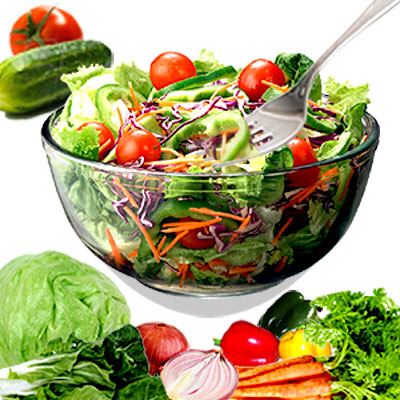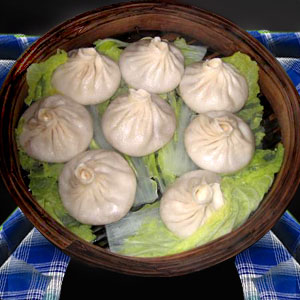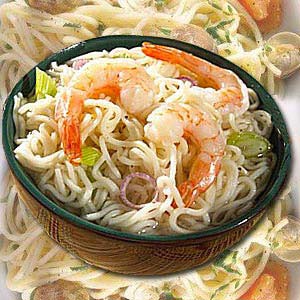Oyster Stew

Oysters are one of the favorite exotic foods for a long time - eaten raw or cooked in many ways - Oyster Stew one of the most popular methods. Many consider oysters as one of the aphrodisiacs possibly owing to their rich content of Zinc - a mineral essential for the production of testosterone. Zinc coupled with other essential minerals and amino acids found in edible Oysters make them one of the healthiest sea foods.
Otto von Bismarck, the 19th century Prussian and German statesman was purported to be very fond of Oysters and used to consume large quantities of them at a time.
You don't need to be an ostreaphile - an oyster lover to relish Oyster. It would suffice that you care much for health and prefer healthy diets to include Oysters in your menu. Apart from fruits, vegetables, dairy products, meat and poultry food, inclusion of two servings of oysters, rich in vitamins, proteins and Omega 3 fatty acids every week make for a healthy diet regime.
Oyster as nutritious food
Oyster belongs to the family of shellfish - known as bivalve mollusks. These varieties of shellfish are low in fat, rich in vitamins and minerals with a high concentration of omega-3 fatty acids. There is ample evidence to confirm significant health benefits from foods rich in omega-3 fatty acids.
The different dietary sources of omega-3 fatty acids include fish oil, certain plants and nut oils. Amongst these sources, fish oil contains both DHA or docosahexaenoic acid and EPA or Eicosapentaenoic acid while vegetable based sources contain only ALA or alpha-linolenic acid. There is a growing body of evidence, which suggests that foods with high concentration of ALA may lead to higher risk of prostate cancer.
Omega 3 fatty acid is good for your heart. Clinical studies indicate some omega 3 fatty acids do reduce the risk of heart disease. Omega 3 fatty acids also boost immune system, help reduce blood pressure and decrease the levels of triglycerides and cholesterol.
Researches point to the role of omega-3 fatty acids in aiding brain development and intelligence, especially in growing fetus. Oyster rich in omega-3 fatty acid can also help combat schizophrenia and depression. On the whole, oyster is one of the most nutritionally well balanced, nourishing sea food containing protein, several vitamins, sodium iron, potassium, calcium, magnesium, iodine, phosphorus and zinc.
Oyster Facts
Pacific, Olympia and Atlantic are the three broad classifications of oysters. Though there are more than seventy edible species, only a few are grown commercially. Not all oysters taste alike. The tastes of oysters are much determined by water temperature, salinity and the vegetation on which they feed. The taste and the texture do not remain constant but differ at different times of the year.
The Pacific oysters: Kumamoto, Samish bay, Steamboats, Pearl Bay, Malaspina, Royal Myagi are the different varieties of pacific oysters. The names denote the race or growing area. The shells of pacific oysters are more deeply cupped and the meat is generally creamier.
The Olympia oysters: Are very small in size, usually not exceeding 2 inches.
The Atlantic: Malpeque, Caraquet, Blue Point, Pine Island, Pugwash are the different varieties of Atlantic oysters. Pretty meaty, the tastes differ ranging from a salty finish to a subtle fruity sweet finish.
Guide to Oyster Eating
There are passionate Oyster lovers who will not let any foreign substance come in the way of eating their prized food. They slit open the shells with a special knife and some cultivated skill to match - for it is not easy to pry the closed shells against the adductor muscles of the live oyster. Some add a dash of lime to enhance the taste.
Opening the shell with a shellfish fork or shucking knife and eating it raw is the simplest way of eating oysters. Especially, fresh, young oysters taste delicious raw on the half shell. If you relish eating oysters raw and uncooked, pick fresh oysters alive just before you eat them. Check if they are tightly closed for if they are already opened. It just means they are dead and need to be discarded.
Eating raw oysters is an art by itself. An oyster knife or a shellfish knife is the perfect oyster cutlery. As you set out to relish a raw oyster, use the shellfish fork and detach the oyster from its shell. Hold the oyster shell firmly and look out for the best 'sipping lip' on the shell. Bring the shell to your lips and in one swift move, slurp the oyster and the juice (liquor).
Oyster - Cooking Methods
For oyster delicacy preparation use larger oysters and choose any of the cooking methods. Oysters can be cooked anyway you want as long as it is brief. Most shell fish tend to turn rubbery if overcooked. Again shell fish require little spices or other add-ons to flavor them. Oysters are akin to Wine. Select carefully your choice.
Oyster stew recipe Method 1:
Ingredients:
1 can oyster (8 ounce can)
1 can evaporated milk (12 ounce can)
1-cup chicken broth
1 tsp butter (unsalted)
Salt and pepper to taste.
Take a wide-bottomed saucepan and warm cleaned oysters over medium heat. Transfer butter to the container and wait until the butter is milted. Transfer milk and allow it to warm. The milk need not reach the boiling temperature. Oyster stew is ready; add salt and pepper to taste. Serve oyster stew with oyster, oyster cracker or any other common cracker.
Oyster stew recipe Method 2:
2 fresh green onions
2 tbsp. unsalted butter.
1 can fresh oysters (undrained 12 ounce can)
1-quart milk
¼ tsp salt
¼ tsp white pepper
Red pepper flakes to taste.
Chop the green onions and keep aside. Melt butter and sauté onion in butter until tender. Add the other entire remaining ingredients one after the other. In low heat, cook the ingredients until the edges of oysters begin to curl up. The mixture should not reach boiling temperature. Oyster stew is ready, serve with crackers and garnish with sliced green onion.
Fried oyster recipe:
Fresh oysters large or medium sized - 12 nos.
Eggs - 2 nos.
Bread crumbs - 1 cup
Vegetable oil - 3 tablespoons.
Salt & pepper to taste.
Shuck the oysters and place in a colander to drain. Or use shucked oysters, which are stored in vacuum-packs. Crack the eggs and beat well with a fork. Dip the drained oysters in beaten eggs. Salt and pepper may be added to breadcrumbs. Keep the breadcrumbs on a large plate. Roll the oysters dipped in beaten eggs in breadcrumbs. Coat well on all sides. Let it dry. Keep aside for 30-45 minutes.
Heat oil in a wide-bottomed frying pan. Add oysters to the oil and fry until golden brown. Fry few oysters at a time. Do not overcrowd the pan. Turn from one side to another after it becomes totally golden brown and the edges are curled. Take care not to overcook the oyster. Fried oysters are ready. Serve with hot sauce and squeeze lemon for extra flavor. Or spread fried oysters over a plate of Caesar salad.
Top of the Page: Oyster Stew
Tags:#oysters #Oyster Stew
 Food and Nutrition Facts
Food and Nutrition Facts Chamomile
Parsnip Soup
Dim Sum
Gazpacho Soup
Whole Grain Cereal
Jicama Nutrition
Bok Choy Stir Fry
Chia Seeds Benefits
Teff Nutrition
Kaniwa
Flax Seed
Wheatgrass Benefits
Kelp Benefits
Types of Chili Peppers
Medicinal Benefits of Pomegranate
Arugula Leaves
Maca Root
Pitaya Fruit
Benefits of Celery
Leek
Asparagus Benefits
Oyster Stew
Oyster Mushroom
Lupin Beans
Quinoa
Freekeh
Extra Virgin Olive Oil
Dill Pickle
Sauerkraut
Fat Burning Foods
Nutrition Chart
Food Combining
Calorie Counter
calories ...
Non Alcoholic Beverage
Punch Recipes
Food Label Nutrition
Homemade Sausages
Cooking Steak
Eating on a Budget
Budget Friendly Recipes
Quick Recipes
 Healthy Packed Lunch
Healthy Packed Lunch Overnight Oats Recipes
Eggplant Casserole
Brunch Recipes
Burrito Recipes
Muffin Recipes
Cupcake Frosting
Apple Crisp
Stir Fry Cooking
Seafood Salad Recipe
Cooking Corn on the Cob
Finger Food Recipe
Sandwich Recipe
Bread Stuffing Recipes
Easy Chili Recipes
Picnic Recipes
Edible Mushroom Recipes
Mushroom Soup Recipes
Dip Recipe
Tapas Recipe
Corned Beef Recipe
Canned Salmon Recipe
Tilapia Recipes
Crumb Cake
Flourless Chocolate Cake
Regional Food
 Lasagna Recipe
Lasagna Recipe Peruvian Ceviche
Chinese Food Recipe
Vietnamese Food Recipe
Malaysian Food
Korean Food Recipe
Indian Curry Recipe
Edible Rice Paper
Mexican Food Recipe
Quesadilla
Guacamole Dip
Italian Food Recipe
Spanish Food Recipe
Kosher Food
Falafel Recipe
Tandoori Chicken
Noodles
Canape
Couscous
Meatloaf
Chowder
Gumbo Recipe
Crockpot Recipes
Moroccan Food
Healthy Food
Pre Workout Snack
Matcha Tea
Simple food Swaps to Lose Weight
Foods to Beat Stress
Foods to beat Insomnia
Bone Density Foods
Prebiotic Foods
Kefir Grains
Agave Nectar
Spicy Trail Mix
Pesto Sauce
Homemade Hummus
Crab Cake Sauce
Bamboo Shoots Nutrition
Lemon Grass Plant
Butter Beans Recipes
Loose Green Tea
Seaweed Nutrition
Healthy Food
Low Fat Granola Bar
Steel Cut Oatmeal
Fruit Pizza
Pizza Toppings
Green Smoothie
Healthy Meal Planning
Delicious Mealtime Recipes
Heart Healthy Fats
Healthy Heart Recipe
Healthy Dinner Recipe
Healthy Dessert Recipe
Healthy Fast Food
Healthy Kid Recipe
Probiotic Food
Diabetic Friendly Foods
Fruit Salad Recipe
Bread Pudding
Tofu Recipe
Oat Bran
Broccoli Salad
Avocado Recipe
Iron Rich Food
Brain Foods
Antioxidant Food
Natural Diuretic
Low Fat Cooking Tips
Rice Pilaf Recipe
Low fat Chicken Recipe
Food Tips

Sous Vide Cooking Technique
Natural Sugar Substitute
Stevia Sugar Substitute
Sunflower Seeds Nutrition
Bouquet Garni
Cake Decorating Tips
High Satiety Foods
Thanksgiving Dinner
Safe Food Storage
Frozen Food Storage Tips
Cold Storage Food Tips
Leftover Recipe
Food Pyramid
Dairy Free Food
Microwave Cooking
Food Intolerance
Homemade Ice Cream
Apple Cider Vinegar
Benefits of Honey
Beverage Cooler
Food Poisoning Symptom
Food Allergy Symptom
Food Addiction
Top of the Page: Oyster Stew
Popularity Index: 101,411

